| |
|
| |
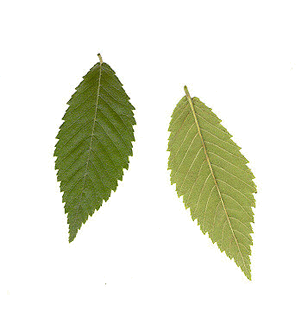 |
| |
Winged Elm Leaf Top & Bottom |
Identification:
Identification:
The leaves are alternate,
simple and 1 inches to 3 inches long. They are
darker above than below, and the margin is
asymmetric at the base and
doubly serrate.
Compare the leaf shape
characteristics carefully to that of the Eastern Hophornbeam.
Note the alternate branching on this tree.
| |
|
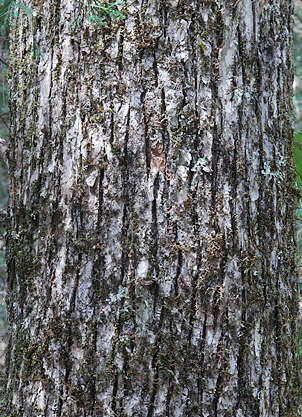 |
|
|
Winged Elm Bark |
The bark of the Winged Elm is
gray-brown, thin and smooth in young trees, with shallow fissures
and long, narrow scaly ridges.
The twigs of the Winged Elm are
gray-brown to red-brown and smooth, with orange
lenticels. They often
have the corky wings that give this tree its common name.
| |
|
| |
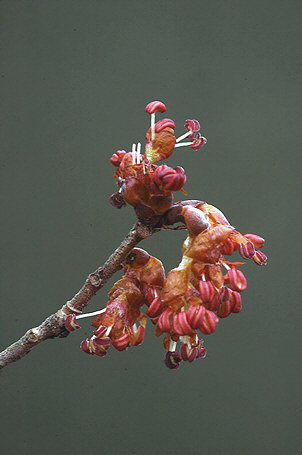 |
| |
Winged Elm Flower |
| |
|
| |
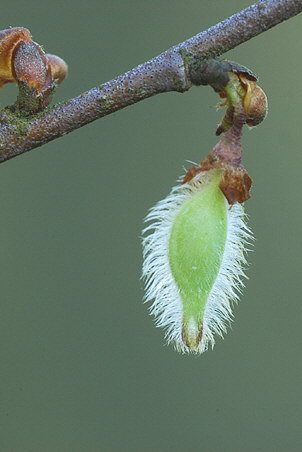 |
| |
Winged Elm Samara |
The
flowers of
the Winged Elm appear quite early in March. The flowers are
perfect, having both
stamens and
pistols. The fruit, or
samaras, form by the first week in April. You can often find
the samaras on the surface of the trail beneath winged elms at this
time of year.
Other Uses
and Lore:
The wood of this tree is hard, strong and
close-grained. It has been used for table legs and tool handles.
In times past the inner bark was made into a rope for fastening the
covers of cotton bales.
Many songbirds eat the samaras of the winged elm and
nest among its branches. Deer browse the foliage.
Butterflies
that use it as a host plant include the Comma, the Question Mark and
the Mourning Cloak.
The
Trail From Station Nine to Station Ten
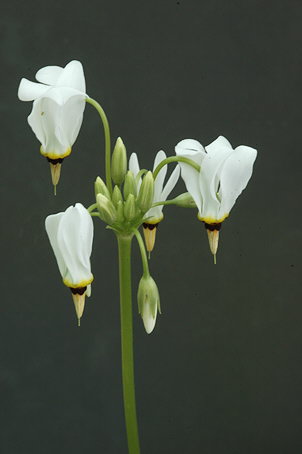 |
| Shooting
Stars |
After Station
Nine, the trail is almost flat, descending very slowly to Station
Ten. Look for wildflowers along the edges of the trail.
One of the most beautiful, and most aptly named) is the Shooting
Star. Clusters of these wildflowers are common along the lower
parts of the tree trail in the spring. Station Ten will be on
the right side of the trail where the trail again forks. You
will take the right fork of the trail, which continues toward the
river overlook.
|